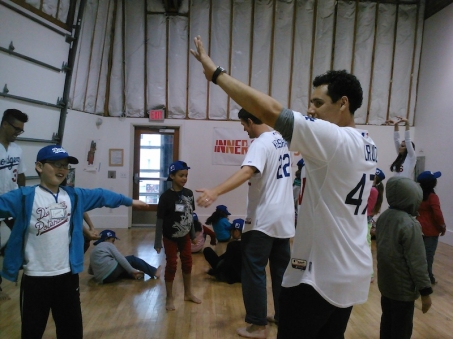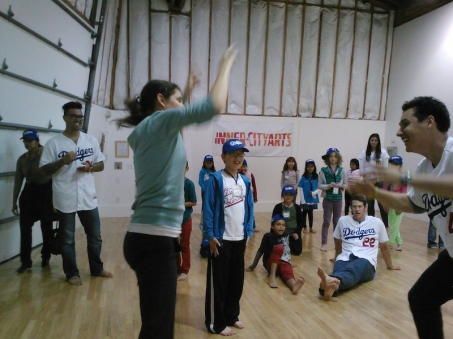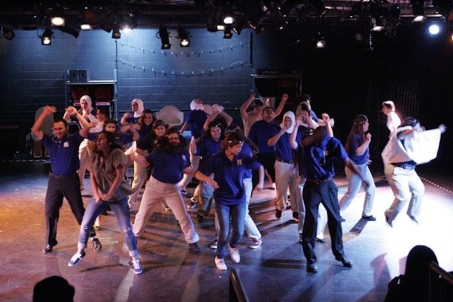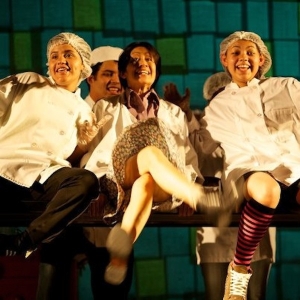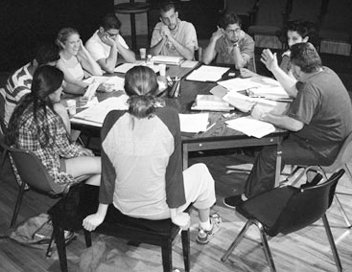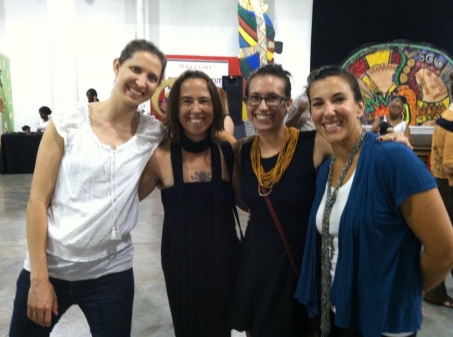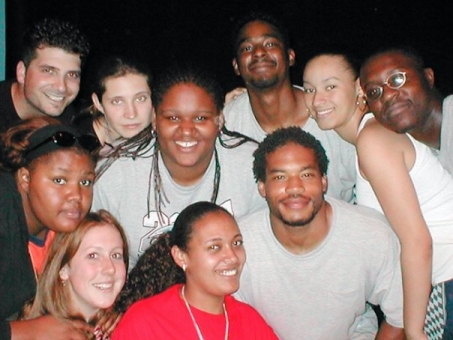As an educator, I teach a variety of practice-based and academic classes at the college level. My focus is on teaching Modern Dance, Laban / Bartenieff Movement Analysis, Improvisation, Dance History, Movement for Actors, and Composition. I have taught in the dance programs at Cal State Long Beach, Pasadena City College, Pomona College, University of La Verne, and Cal Poly Pomona.
In addition, I work as a Teaching Artist in public schools and art centers in Los Angeles teaching creative movement, dance technique and composition to young people spanning Kindergarten through High School. My work in the Arts Branch of Los Angeles Unified School District has included teaching Creative Movement as well as coaching classroom teachers to utilize dance pedagogy in their classrooms.
I have mentored young choreographers within Shakespeare Center L.A’s Will Power to Youth Program, as well as leading Dialogue Groups for Will Power to Youth to discuss issues of identity and power.
At Inner City Arts, the Music Center, and the Colburn School, I have taught Creative Movement. In addition, I work in LACMA’s (Los Angeles County Museum of Art) NexGen Andell Family Sundays program teaching Creative Movement to families that visit the museum.
Teaching Philosophy
Teaching and Art Making
Whether teaching a movement practice, academic lecture, or composition class, I design the classroom as a creative lab where students learn by trying things out and making discoveries. I see teaching, dancing and choreographing as three parts that make up a dynamic whole, each part inspiring and informing the others. As a dance-maker, performer and educator I value creative voice, ensemble, movement practice, and the ability to name and make meaning from what one perceives.
Developing One’s Creative Voice
As an educator, my job is to offer a set of tools that facilitate young dance artists to become increasingly articulate in saying “it”. My aim is to develop self-directed artists who trust their creative impulses and challenge themselves to lean into the unknown while remaining responsive to feedback. This is also my ongoing intention as an artist – to be sensitive to what has already been said, to respond and contribute to a larger conversation, to say what needs to be said.
Valuing Ensemble
I design my classes in such a way that the students become an ensemble as our time together unfolds. Students practice composing while moving. They learn to think as a group as they perform existing scores, re-imagine scores, and design their own. Working closely together cultivates a generosity with one another as movers, thinkers and performers.
Prioritizing Physical Practice
In both my work as a choreographer and an educator, I use the Bartenieff Fundamentals to build connectvity and readiness in the body, utilizing breath support, activating core support and practicing developmental Patterns of Total Body Organization. In a contemporary dance technique class for instance, I scaffold exercises that encourage ease, alignment, fluidity and risk taking. An integral aspect of “technique” is the presence of the performer. Training in voice and commitment are just as important as other more traditional aspects of dance class. I challenge students to remain engaged on every level, including developing their range of Effort life in their dancing (i.e., their range of expressive qualities that they employ while dancing). I strive to create a focused, supportive, vibrant learning community where it is safe to take risks and have fun while doing so.
Observation, Articulation and Meaning Making
I encourage my students to both embody and speak articulately about the movement they experience in their own bodies, and in the movement they observe others performing. In the context of a dance history class, I incorporate the observation methods of Laban Movement Analysis to train students to perceive, discuss and make meaning from movement. These tools allow them to cite specific movement examples when forming an argument in relation to the social, political, cultural and aesthetic contexts of a dance. Such observation methods transfer to their capacity to give accurate and supportive feedback to a classmate in a composition class, or to noticing and repeating a nuance in a technique class or rehearsal. This ability to discern and articulate what one sees supports their development as artists.
Dance Everywhere All the Time
I want my dance class to be a place where everyone knows they’re welcome, and where people from different backgrounds get to know and support one another. I create an environment where students can access the benefits of dance education regardless of whether they’ve had previous dance “training”. I want students to hone kinesthetic awareness, increase mobility, strength and agility, deepen critical thinking abilities, learn how to collaborate in groups and think together as an ensemble. Studying dance is one way for people to practice moving through the world with confidence, sensitivity, and a sense of grounded readiness, and everyone is invited.
LACMA (Los Angeles County Museum of Art) Andell Family Sundays’ Dance is Where the Heart Is with Sarah Leddy, a dance workshop for families responding to visual artist Do Ho Suh’s 348 W. 22nd Street (workshop premiered on Nov 20th, 2020)
Alumna from Urban Bush Women’s Summer Leadership Institute and from UCLA’s Department of World Arts and Cultures / Dance
Sarah Leddy, Rosemary Candelario, Marina Magalhães and Ana Maria Alvarez

